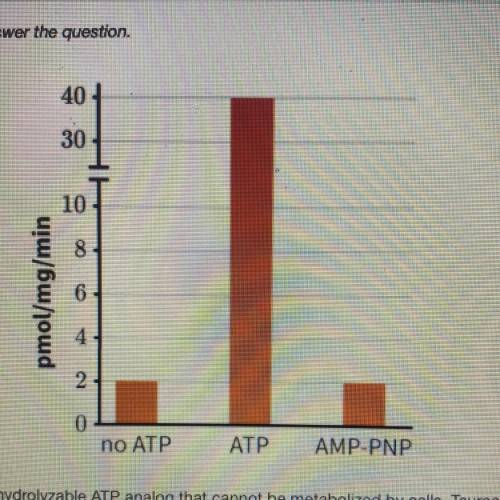
Biology, 22.10.2020 23:01 jaydenromero31
AMP-PNP is a non-hydrolyzable ATP analog that cannot be metabolized by cells. Taurocholate is a bile
acid that helps emulsify fats. When taurocholate is added to hepatocyte cell culture, it accumulates in
those cells. The graph below shows the rate of cellular accumulation of the drug taurocholate in the
presence of either no ATP, ATP, or AMP-PNP. Based on this data, describe the mechanism by which
taurocholate enters the cell. Justify your answer.


Answers: 2


Other questions on the subject: Biology

Biology, 21.06.2019 18:40, Bra1nPowers
Study the diagram of a desert food chain . what would most likely happen if the kangaroo rats were killed off and removed from the food chain ?
Answers: 1


Biology, 22.06.2019 11:00, shikiaanthony
Draw the farm's ppf for corn and beef. draw a point that shows an inefficient combination of corn and beef. label ita. draw a point that shows an unattainable combination of corn and beef. label itb. draw a point that shows an efficient combination of corn and beef. label itc.
Answers: 2
You know the right answer?
AMP-PNP is a non-hydrolyzable ATP analog that cannot be metabolized by cells. Taurocholate is a bile...
Questions in other subjects:


History, 12.05.2021 01:00

Advanced Placement (AP), 12.05.2021 01:00





Mathematics, 12.05.2021 01:00

English, 12.05.2021 01:00

Mathematics, 12.05.2021 01:00



